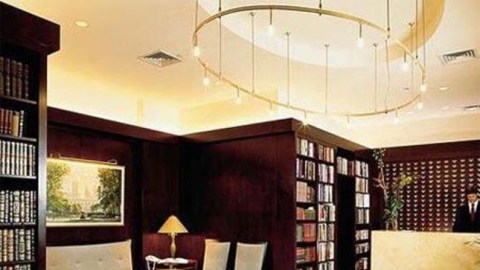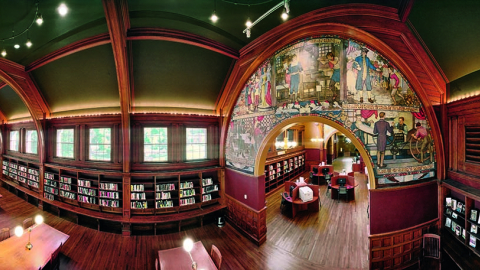Admont Abbey Library, Admont, Austria
The Admont Abbey Library is actually a Christian monastery built in 1776 near the Enns River in the town of Admont, Austria. It is the oldest remaining monastery in the state of Styria, and is also famous for having the largest monastery library in the world with many long-standing scientific and artistic collections and unique Baroque architecture.
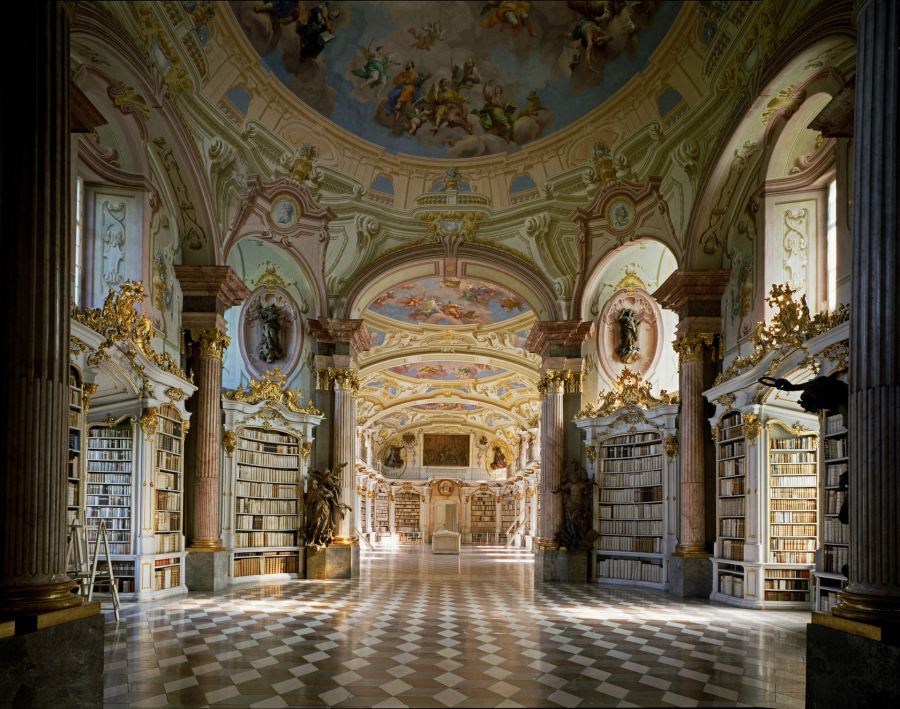
The library's lobby, designed by architect Joseph Hueber, is 70 meters long, 14 meters wide and 13 meters high. The ceiling consists of seven domes, decorated with frescoes by the Austrian artist Bartolomeo Altomonte showing the stages of human knowledge: starting with thoughts and words, creating science and art, and finally reaching the Book of Revelation in the central dome. The walls are painted in two colors: yellow and white, and there are 48 windows to flood the room with light.
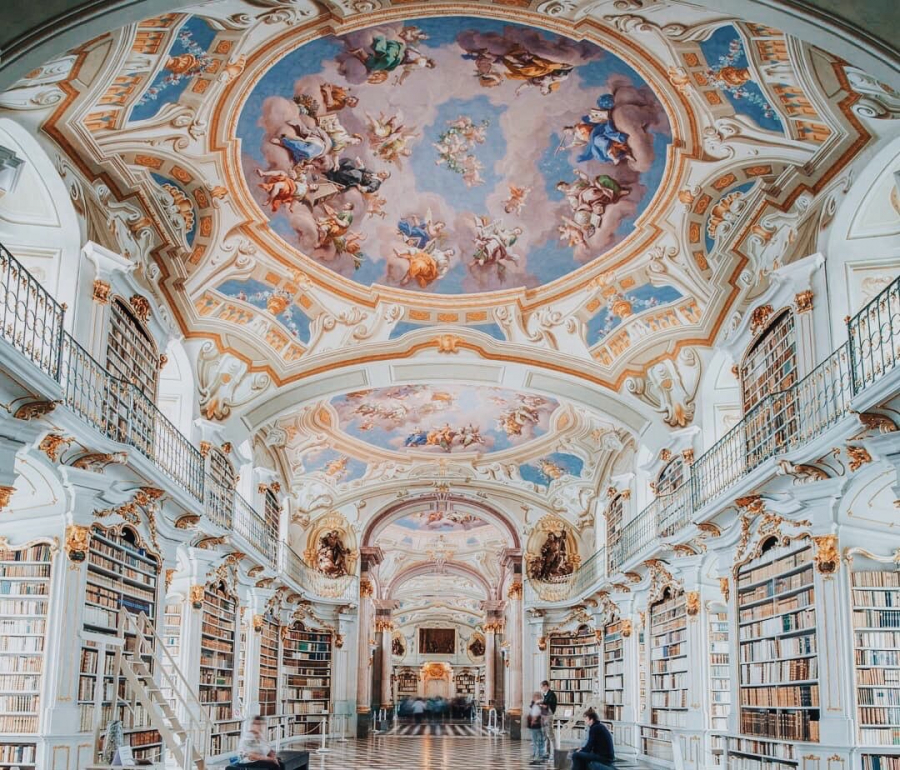
In contrast to the idea of enlightenment in the ceiling paintings, the library is also decorated with four famous statues by sculptor Josef Stammel with the theme "Four Last Things" including: death and resurrection, hell and heaven.
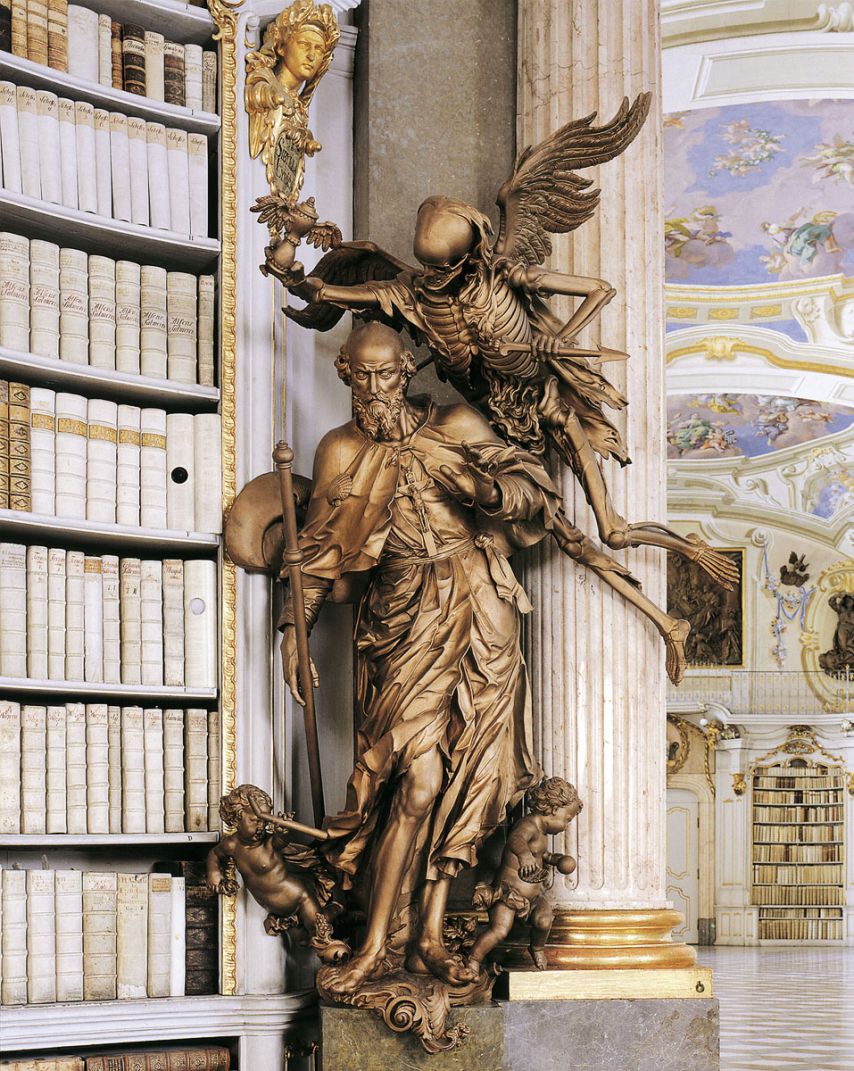
The statue "Death" depicts a man in his final years with a cross, a staff and a shell.

The statue "Resurrection" depicts a young man emerging from his grave with an angel by his side.

The statue "Hell" depicts an angry man flanked by hellish demons.
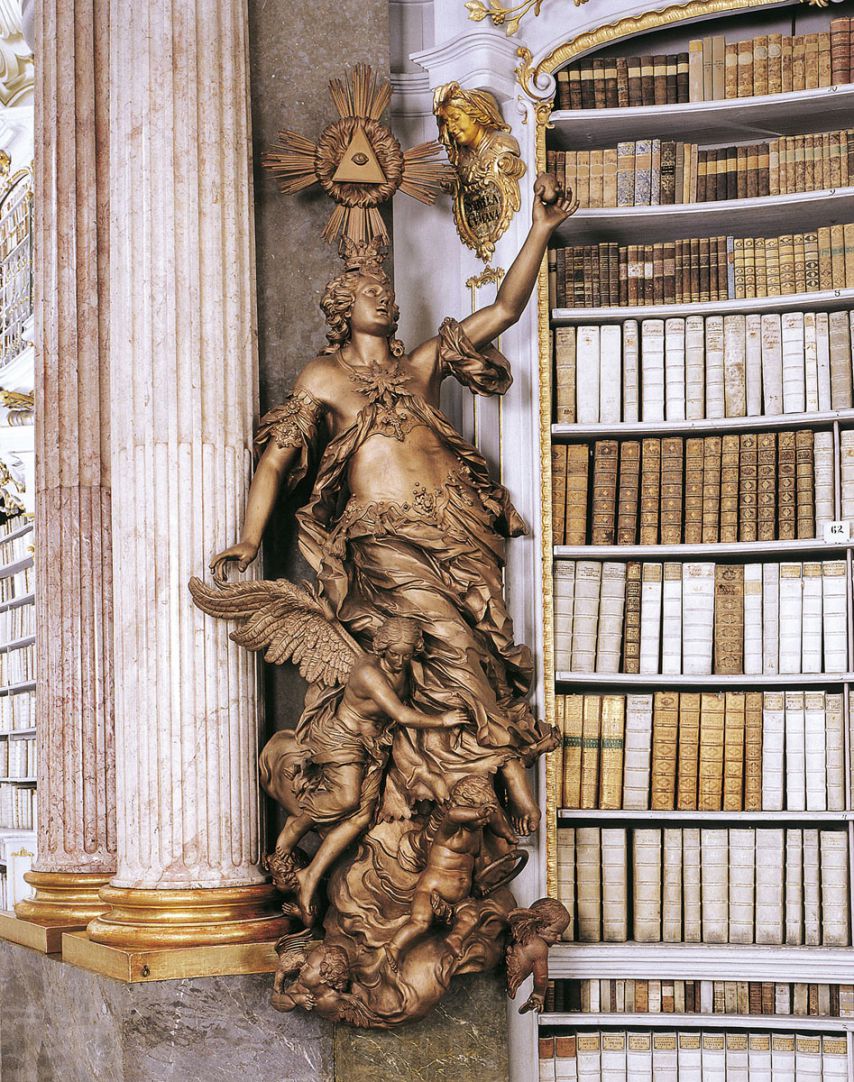
The statue of "Heaven" is a woman dressed in gorgeous clothes and jewelry protected by an angel.
Mafra Library, Mafra, Portugal
Mafra Palace was built in 1717, located in Mafra, Portugal, 28 km from Lisbon with 1200 rooms and more than 4700 doors and windows. It is classified as a National Monument of Portugal and was recognized by UNESCO as a World Heritage Site in 2019.
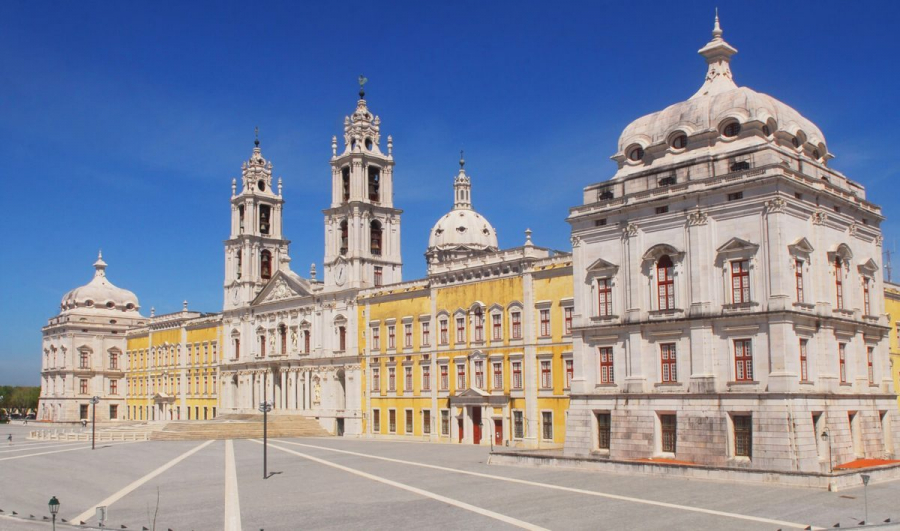
On the second floor of the palace is a magnificent library built by architect Manuel Caetano de Sousa, measuring 88 meters long, 9.5 meters wide and 13 meters high. The library contains more than 36,000 leather-bound volumes dating from the 14th to the 19th centuries. In particular, the library staff also raises bats and releases them at night to hunt insects that destroy books.
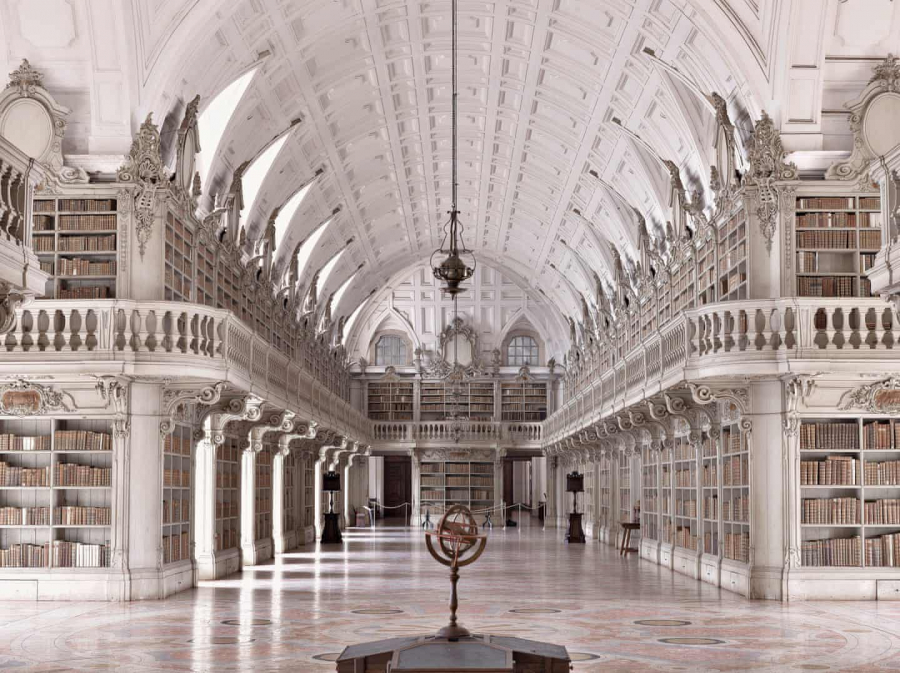
In addition, the library is also famous for its splendid architecture: floors covered with rose-shaped tiles and white marble; two-story wooden bookshelves in the Rococo style (an 18th-century French art movement characterized by elegance, modesty but still charming and splendid) and balconies with wooden railings.
Girolamini Library, Naples, Italy
The Girolamini Library, located in the Girolamini Church, was built in the 16th century and is the oldest library in Naples. It holds approximately 160,000 volumes, mainly ancient texts on philosophy, theology, history and music, including approximately 6,500 musical works from the 16th to the 19th centuries.

In April 2012, about 1,500 books were stolen from the library. The largest book heist in centuries forced the library to close for months while police investigated. By 2013, the culprits had been found and about 80% of the stolen books had been returned to the library. The Girolamini Library has now reopened and is expected to return to its former glory.
Royal Portuguese Library Cabinet of Reading, Rio de Janeiro, Brazil
This is a library that dates back to 1837 and is located at 30 Luís de Camões Street, downtown Rio de Janeiro, Brazil. It was built by a group of 43 Portuguese immigrants to Brazil to promote Portuguese culture. Time magazine once voted it the fourth most beautiful library in the world.
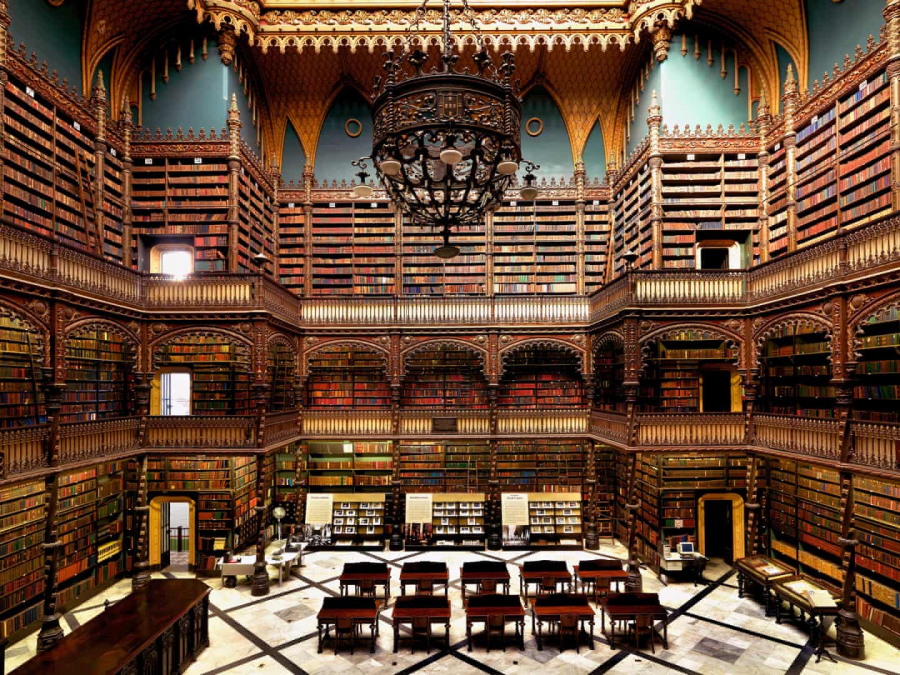
The library's facade is inspired by the distinctive Late Gothic architectural style. The four statues that adorn the facade are those of the Portuguese explorer Pedro Álvares Cabral, who discovered Brazil, Portugal's greatest poet Luís de Camões, Infante D. Henrique, and explorer Vasco da Gama. Inside the library are many other beautiful statues made of silver, ivory, and marble, and the interior is made of wood. In particular, the ceiling of the reading room has a beautiful chandelier and a skylight to let in light.
Saint Gall Library, St. Gallen, Switzerland
Founded in the 7th century, the Library of Saint Gall is the oldest library in Switzerland and one of the most important cultural centers in Europe. The library contains nearly 160,000 volumes. In addition to ancient printed books, it also has more than 1,650 incunabula (books printed before 1501) and 2,100 manuscripts dating from the 8th to the 15th centuries.
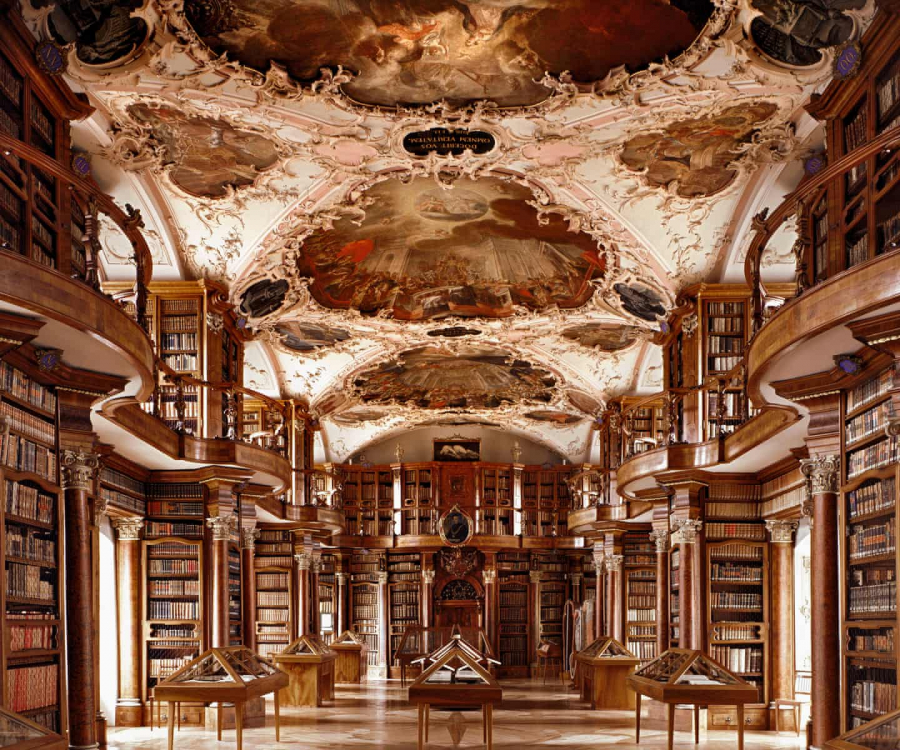
Above the entrance of the library is an inscription in Greek that reads: "Sacred place for the soul." The library was built in the Baroque style and furnished in the Rococo style. The walls were covered with beautifully carved wooden bookcases and the ceilings were covered with magnificent frescoes.
Sainte-Geneviève Library, Paris, France
The Bibliothèque Sainte-Geneviève is a public library located at 10, place du Panthéon, 5th arrondissement, Paris. It was founded in the 6th century by Clovis I, King of the Franks. The library holds approximately 2 million volumes and is currently the inter-university library for the various departments of the University of Paris.
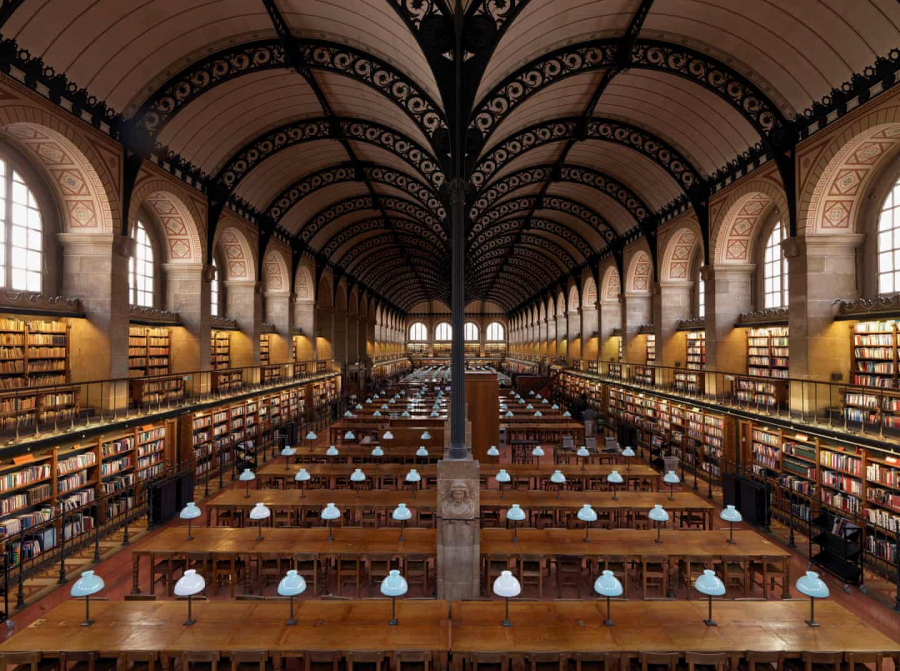
The Sainte-Geneviève Library was designed in the Italianate style by architect Henri Labrouste Born. The facade resembles a Roman building with simple arched windows and intricate carvings. The library's reading room has slender iron columns to creatively support the dome and large windows to let in light.
Strahov Monastery Library, Prague, Czech Republic
The Strahov Monastery Library was founded in 1143 and has survived many wars, fires, and robberies to survive to this day. It is one of the best preserved and most valuable historical libraries with over 200,000 volumes.
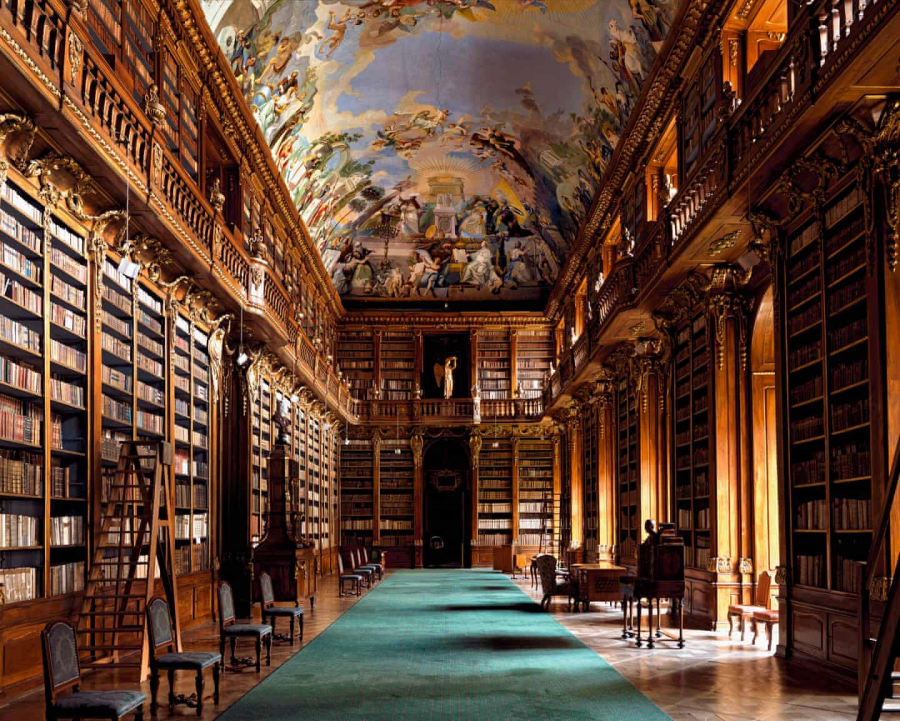
The library has two very magnificent halls. HallTheologyBuilt in 1671 in the traditional Baroque style, the entire hall is painted white, making the space more spacious and airy, and is decorated with many paintings and inscriptions illustrating the principles of faith, knowledge, and divine creation. HallPhilosophybuilt in 1783, is more classical in style and features magnificent walnut bookcases. Both halls have magnificent ceiling frescoes by Siard Nosecký and Anton Maulbertsch.






















